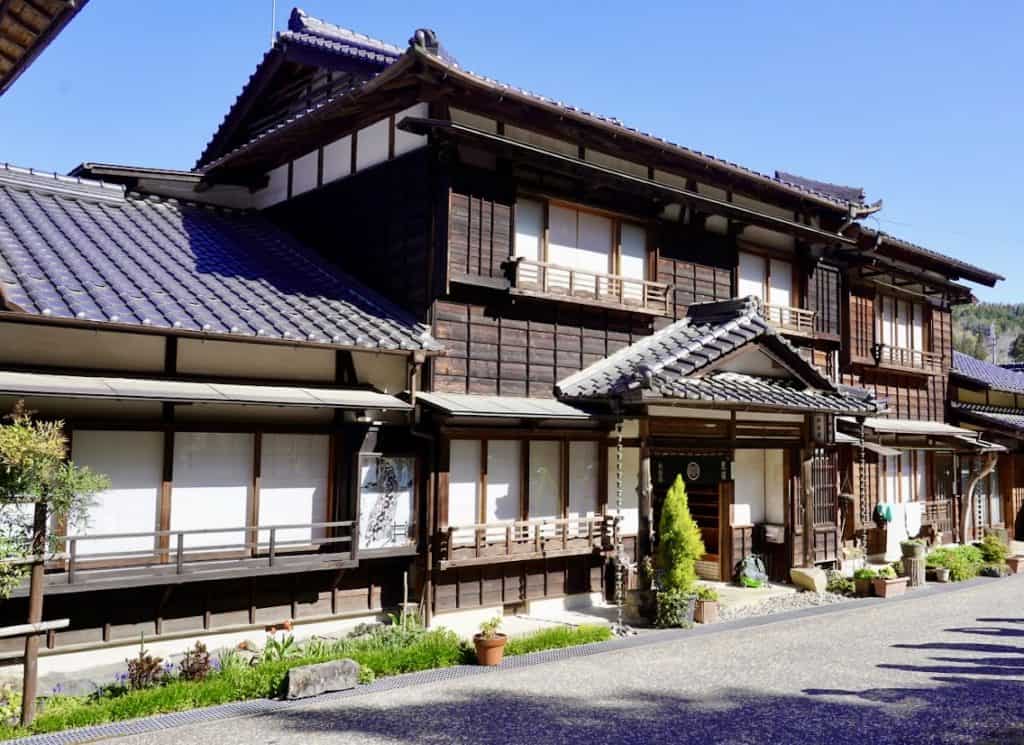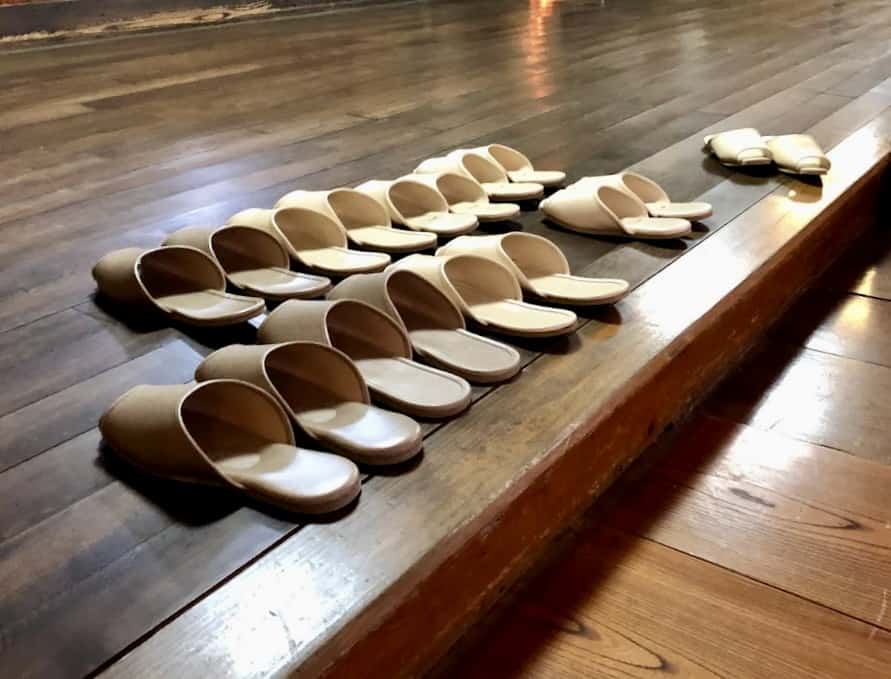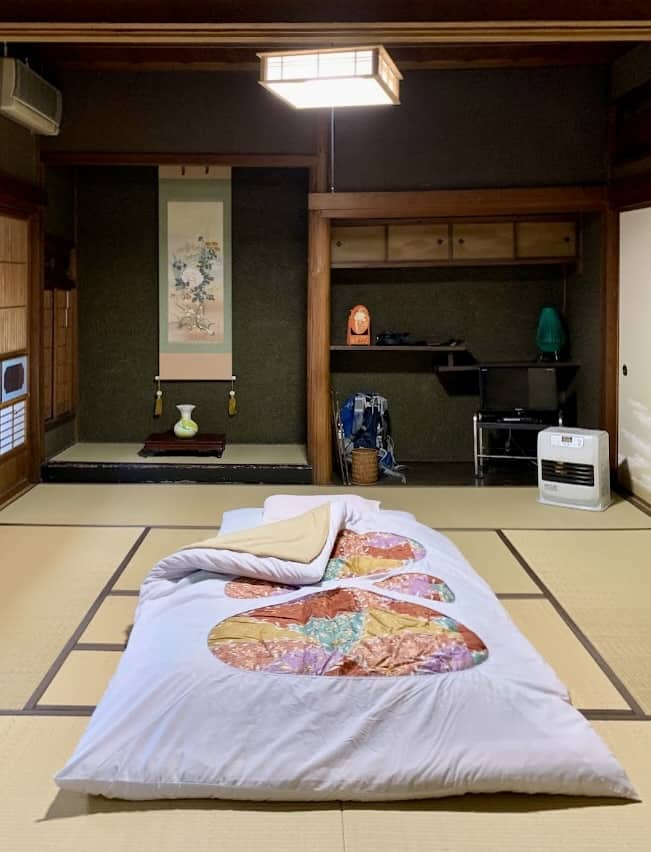Why are there so many slippers?

The Japanese have a highly refined aesthetic regarding shoes and cleanliness. Signs at the entrances to temples, shrines, traditional inns, and many restaurants indicate that shoes should be removed before entering. There is generally a step up in the genkan entrance area where this should be done.
The concept is simple.
The lower level is dirty, “outside.”
The upper step is clean, “inside.”
The dirty outside should never be trod upon with socks. The raised inside should never be touched by a shoe, not even to rest your boot on while tying your laces. There is a clear line of division—the step up.
There are generally three areas that require shoe changes.
Entering an inn, traditional restaurant, or hot springs

In the genkan, step out of your shoes and directly onto the raised inside area. Then turn your shoes with the toes pointing outside, neatly side by side, or if there is a shoe shelf, place them tidily on the shelf.
Usually, you will be given slippers to wear inside a building.
Often there are outside slippers in the genkan to use for short trips outside when you don’t want to bother putting on your shoes.
Tatami rooms

Tatami mats are made of woven reeds and are delicate. One does not walk upon them with shoes, nor should one pull a suitcase along them. When entering a tatami room, slip out of your slippers and step onto the tatami, leaving your slippers with toes pointing outwards, neatly lined up in the hall or room entranceway.
Restrooms

A restroom floor is considered dirty, and thus there are designated toilet slippers. When going into the restroom, step out of your inside slippers and into the toilet slippers. You will see a clear line of division, either a step, a doorway, or a division marked on the floor.
When you’re done, leave the toilet slippers with toes pointing away from the entry area, neatly side by side and ready for the next person to use.
Don’t forget to put your inside slippers back on.
Shoe etiquette in Japan made simple
When there is a step up from an entranceway or hall, you probably need to change your footwear.
Finally
Leave things as you found them, or tidier. Being aware of the customs of the land will help you to have a pleasant visit and to avoid jarring the sensibilities of the Japanese.
To read the dos and don’ts for visiting onsens, or hot springs, click this link.
If you have questions about Japan or suggestions for articles, please add them in the comments. For more photos and information on Japan, follow me on instagram at: https://www.instagram.com/more_than_tokyo/




